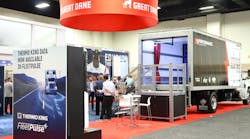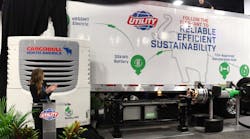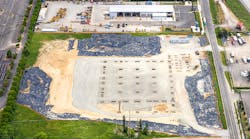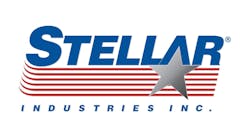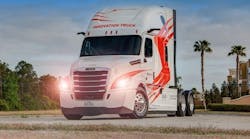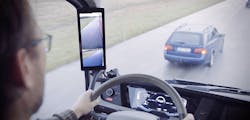The Federal Motor Carrier Safety Administration (FMCSA) recently granted Stoneridge a five-year exemption that allows it to install its camera-monitoring system (CMS) on trucks in place of traditional rear-view mirrors.
In a Federal Register posting, FMCSA said the “use of the MirrorEye system in lieu of mirrors would likely achieve a level of safety equivalent to or greater than the level of safety provided by the regulation.”
The notice also stated that Stoneridge believes the system could reduce driver fatigue “by requiring less head movement by drivers compared to the number of head movements needed to use conventional mirrors.”
While the system is currently an aftermarket product, FMCSA’s decision could pave the way for MirrorEye and other camera systems to one day be built into new trucks.
“This decision will help bring an innovative driver vision technology to market that will greatly improve the safety of everyone who shares the road,” said Jon DeGaynor, president and CEO of Stoneridge. “The MirrorEye Camera Monitor System empowers truck drivers to avoid potential collisions by the elimination of certain blind spots, expansion of their field of view and increased awareness of the truck’s surroundings.
“This exemption allows our customers to fully recognize both the safety and fuel economy benefits of MirrorEye.”
Stoneridge said its exemption application was approved in late December. It applies only to the MirrorEye system, which uses integrated external digital cameras and digital monitors inside the cab to provide an expanded field of view and full-color night vision, making it the only CMS that allows for complete removal of traditional mirrors in the United States.
Other companies, including Daimler Trucks North America, have requested exemptions to use cameras instead of mirrors. Besides safety benefits, these companies also cited higher fuel efficiency through improved aerodynamics.
Fleets including Maverick Transportation, J.B. Hunt and Schneider National provided vehicles, test drivers and feedback during a fleet evaluation period aimed at ensuring MirrorEye meets driver and fleet requirements. Fleets have driven more than 2 million miles with the system, Stoneridge said, and provided “outstanding” reviews.
Schneider and J.B. Hunt provided comments about their experiences with the system to FMCSA.
Schneider said its truck drivers have “had an overwhelmingly positive experience” with the system, while J.B. Hunt wrote “we have not been involved in any collisions and have received overwhelming positive feedback from our test drivers.”
However, the Commercial Vehicle Safety Alliance questioned whether the “technology has a proven safety benefit.” It also expressed concern whether the camera system could “undermine consistency and uniformity in compliance enforcement.”
“Thank you to the leaders in the trucking industry who have tested, provided input and helped validate the effectiveness and reliability of this safety technology,” DeGaynor said. “Stoneridge would like to especially acknowledge the American Trucking Associations, Truckload Carriers Association, Trucking Alliance, Spangenberg Partners and numerous individuals of the trucking community who have supported our mission of improved safety.”
Stoneridge said fleet trial participants even noted they’d feel unsafe returning to conventional mirrors after using MirrorEye.
“MirrorEye technology was designed and improved based on real input from commercial vehicles drivers during testing,” said Stephen Fox, Stoneridge’s vice president of business development. “We have collected a tremendous amount of data and challenged the system in real-life scenarios. We are fully confident MirrorEye CMS will provide exceptional reliability and resolve many of the safety issues commercial vehicle drivers currently face.”
According to Stoneridge, the MirrorEye CMS has met or exceeded the visibility requirements of conventional mirrors by providing the following enhanced vision benefits:
- Greater field of view and elimination of common blind spots—Three views, including wide-angle, narrow-angle and passenger-side “look-down” cameras, greatly expand the driver’s field of view and eliminate blind spots
- Fail-safe design—Independent video processing of multiple camera images ensures that in the unlikely event of an individual camera failure, the other camera images continue to be displayed. Real-time images are continuously displayed without interruption.
- Augmented and enhanced vision quality—High-definition digital cameras provide color night vision, low light sensitivity, glare reduction and trailer panning capabilities.
- Trailer panning tracks the end of the trailer—The CMS automatically tracks the end of the trailer to keep it in view while the vehicle is moving forward. This feature could eliminate right-hand turn collisions with motorists and pedestrians.



